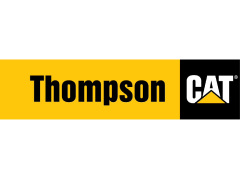Improved Database Repository
When Thompson Tractor Company converted from DBSi to DBSi 5.0, the company's Treasurer, Paul Tombrello, knew he could count on Advanced Computer Inc. (ACI) to empower his managers to make more informed decisions with the new elements and external references anticipated in DBSi 5.0. ACI, which was recently acquired by TARGIT, provided Thompson Tractor Company with what they needed: a database repository that provided the flexibility to work with their present and future financial packages and a variety of reporting software packages.
Time and resources were not available to evaluate, purchase, and retrain users in a new reporting tool when converting to DBSi 5.0, and Tombrello had already proven ACI's reporting strategy in his previous conversion from DBS to DBSi, so he knew he could count on ACI again. Plus, ACI's open architecture allowed Thompson Tractor Company to retain the existing reporting designs known to be effective in the last conversion.
ACI's software, now powered by TARGIT's methodologies, simplified Thompson Tractor Company's reporting administration with a data repository that is compatible with different software applications such as CODA, CRM, Engine Project Management, and other data sources. TARGIT automatically updated Thompson's repository, multidimensional cubes, and reports.
The administration of security and access to end users was also streamlined. Thompson Tractor Company staff could focus on basic and intermediate technical support while TARGIT provided advanced technical support and value-added processes. TARGIT also built validation cubes and reports for detailed accounts validation by Division, Department, and Store. Cubes were used to improve performance while doing the financial validations.
Gross Profit by Customer and Market Segment
But why stop there? Tombrello wondered if there was a way to analyze customer profitability. Of course, TARGIT/ACI had the solution. When they converted Thompson Tractor Company's Automated Financial Reporting System (AFR) to CODA V10, a Market Segment dimension was added to Thompson's Operating Statement cube. This allows all dealer expenses to be aggregated at the customer level. Users can analyze individual customer profitability as well as profitability by Industry, Territory, Product Group, and Business Mix.
Gross Profit by Customer and Market Segment
But why stop there? Tombrello wondered if there was a way to analyze customer profitability. Of course, TARGIT/ACI had the solution. When they converted Thompson Tractor Company's Automated Financial Reporting System (AFR) to CODA V10, a Market Segment dimension was added to Thompson's Operating Statement cube. This allows all dealer expenses to be aggregated at the customer level. Users can analyze individual customer profitability as well as profitability by Industry, Territory, Product Group, and Business Mix.
Thompson Tractor Company already analyzes Gross Profit by any combination of Company, Division, Department, Store, Region, Market Segment, Product Type, Source of Supply, Make, and Sales Rep. Nesting the Customer dimension within any of the previous dimensions and sorting to find the most and least profitable customers in each enhances the power of the dealer's operating statement. In addition, prospective customers can be charted over time to analyze trends.
Receivable Collections Improved Company-Wide
The company had limited Aged Trial Balance reporting available before ACI and TARGIT. The solution was ACI's Aged Receivables (AR) application. What originally started as a plan for just the credit department to get up and running on the application changed quickly when Thompson Tractor Company executives realized how valuable this level of insight could be to the entire company.
Receivable Collections Improved Company-Wide
The company had limited Aged Trial Balance reporting available before ACI and TARGIT. The solution was ACI's Aged Receivables (AR) application. What originally started as a plan for just the credit department to get up and running on the application changed quickly when Thompson Tractor Company executives realized how valuable this level of insight could be to the entire company.
Today, nearly everyone in the company who has access to a computer utilizes AR. It's used every day as a customer collection tool by Product Support Reps and the Sales team. Shop clerks can access the application to view outstanding invoices and unapplied monies on an up-to-the-minute basis. Without it, Sales members would have few options for collecting information.
"We average 100 hits per day on the AR cube. It's important to our business," says Tombrello.
About AR: You can review and analyze outstanding receivables from both a strategic and operational viewpoint. Receivable information is available through dimensions such as divisions, department, store, customer, and age (from the invoice or due date). Drilling through a customer's outstanding receivables can tie amounts due with actual individual invoices. AR also provides access to credit manager comments and/or diary entries for a more detailed analysis of receivables.


